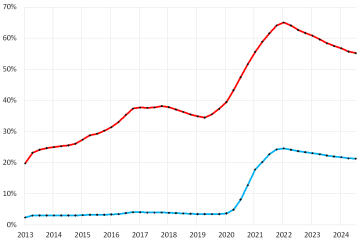Understanding the Current Landscape of Interest Rates
Introduction
Interest rates play a crucial role in the economy as they influence borrowing costs, savings, and investment decisions. As central banks around the world adjust their monetary policies in response to economic conditions, staying updated on interest rate trends has become increasingly important for consumers, investors, and policymakers alike. Recent fluctuations in interest rates have garnered significant attention, and understanding their implications is essential.
Current Trends in Interest Rates
As of September 2023, the Bank of England has raised its base interest rate to 5.25%, marking the eleventh consecutive increase since December 2021. This decision was primarily aimed at combating persistent inflation, which, despite showing some signs of easing, remains above the Bank’s target of 2%. The rise in rates is a response to consistently high consumer prices, driven largely by energy costs and increased demand.
Within the UK, mortgage rates are on the rise, impacting thousands of homeowners and potential buyers. The average rate for a two-year fixed mortgage recently climbed to around 6.25%, posing challenges for first-time buyers who may find home ownership increasingly unaffordable. Additionally, savers are beginning to benefit from the higher interest rates, with many banks offering increased returns on savings accounts to attract deposits.
Impact on Borrowers and Savers
The implications of rising interest rates are felt across various sectors of the economy. For borrowers, higher rates mean increased monthly repayments on variable-rate loans and mortgages, leading to financial strain for households. Conversely, for savers, the uptick in rates offers a rare opportunity for better returns on deposit accounts, encouraging long-term savings.
Forecasting Future Interest Rates
Looking forward, economists suggest that interest rates may peak in the coming months, depending on how inflation metrics progress. The Bank of England has indicated that future decisions will be contingent upon incoming economic data, particularly concerning wage growth and consumer spending. If inflation continues to decline, there may be scope for the central bank to halt rate increases or consider reductions in the latter half of 2024.
Conclusion
The evolving landscape of interest rates is a topic of significant relevance for all economic participants. As rates rise, it is vital for borrowers and savers to reassess their financial strategies. Understanding the implications of interest rate changes can help individuals and businesses make informed decisions, whether it be refinancing loans or securing savings products. Staying educated about these shifts is essential in navigating the current economic climate.









